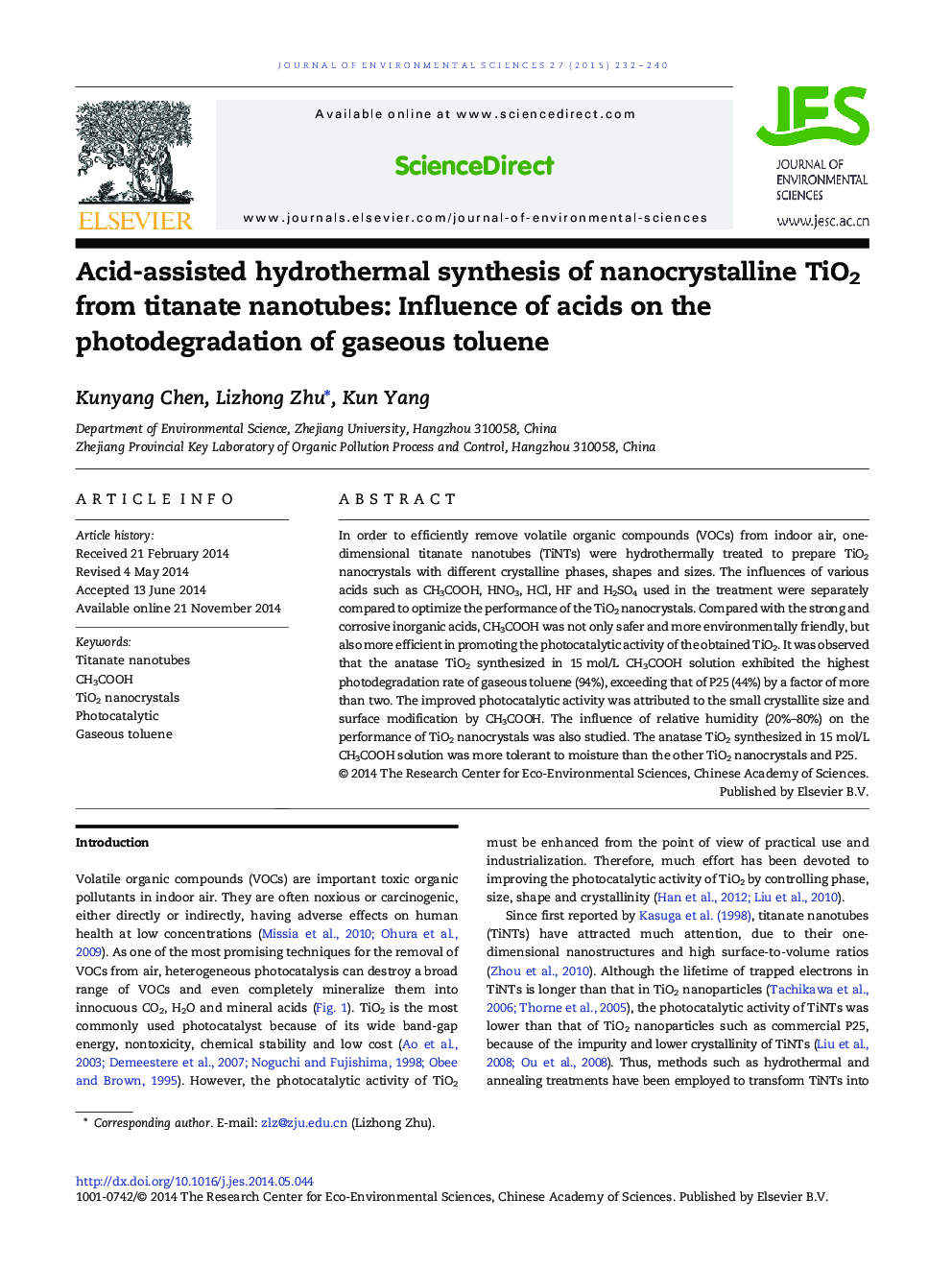| Article ID | Journal | Published Year | Pages | File Type |
|---|---|---|---|---|
| 4454191 | Journal of Environmental Sciences | 2015 | 9 Pages |
In order to efficiently remove volatile organic compounds (VOCs) from indoor air, one-dimensional titanate nanotubes (TiNTs) were hydrothermally treated to prepare TiO2 nanocrystals with different crystalline phases, shapes and sizes. The influences of various acids such as CH3COOH, HNO3, HCl, HF and H2SO4 used in the treatment were separately compared to optimize the performance of the TiO2 nanocrystals. Compared with the strong and corrosive inorganic acids, CH3COOH was not only safer and more environmentally friendly, but also more efficient in promoting the photocatalytic activity of the obtained TiO2. It was observed that the anatase TiO2 synthesized in 15 mol/L CH3COOH solution exhibited the highest photodegradation rate of gaseous toluene (94%), exceeding that of P25 (44%) by a factor of more than two. The improved photocatalytic activity was attributed to the small crystallite size and surface modification by CH3COOH. The influence of relative humidity (20%–80%) on the performance of TiO2 nanocrystals was also studied. The anatase TiO2 synthesized in 15 mol/L CH3COOH solution was more tolerant to moisture than the other TiO2 nanocrystals and P25.
